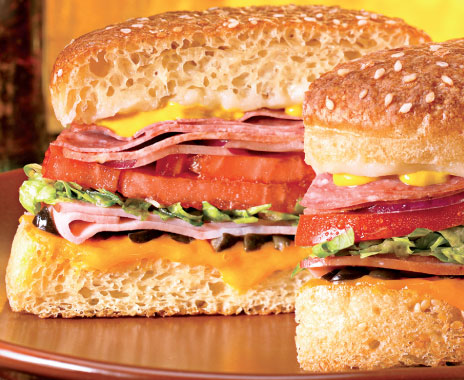With constant pressure to churn out innovative menu items, some quick serves are protecting and marketing unique creations through trademarks, which, while tricky to obtain, have paid off handsomely for many owners and operators.
At Austin, Texas–based Schlotzsky’s, a trademarked sandwich known as The Original is the brand’s best-selling item.
“Our concept started with one sandwich, one size, in one shop, 43 years ago,” says Kelly Roddy, Schlotzsky’s president. “It is named and trademarked The Original, which really identifies it as that sandwich we started with.”
Meanwhile, a menu item closely associated with Taco John’s, the Mexican brand headquartered in Cheyenne, Wyoming, is the Potato Olés. The dish, along with the restaurant’s seasonal Nachos Navidad, are among those that the brand is most known for among customers, says Renée Middleton, vice president of marketing. That’s thanks in part to the decision to trademark both.
For restaurants interested in trademarking their own signature dish, the key is to start with a name that’s singular and unique, says Tara M. Madison, partner at Kean Miller LLP, a legal firm based in Baton Rouge, Louisiana. “That’s critical for trademark protection in the first place, because what trademark protection provides is protection for a distinctive source identifier,” she says. Generic terms should be avoided, she says, and the marketing or creative team charged with naming the dish should look for a name that’s distinctive and memorable.
Once a brand settles on a dish’s name, it’s simple to use search skills to determine availability. If the initial search doesn’t turn up any potential conflicts, the matter can be handed over to legal counsel, who conducts more in-depth research, she says.
Middleton says her team also discusses the concept from the standpoint of intellectual property and determines if the product is worth the effort. “It’s not something you undertake lightly,” she says. “There is a cost to do all the paperwork, it takes some time, and you have to be able to show how you’re using it in your advertising or marketing.”
To obtain federal trademark protection, the formal process begins with filing an application with the U.S. Patent and Trademark Office. Once the application is submitted, it becomes a matter of public record. Madison says that’s good news for quick serves in the research phase, because it means previous applications are also available to view.
Getting a trademark registered isn’t always a smooth or easy process. Schlotzsky’s Roddy says an operator may come up with a great idea that perfectly fits a brand, but “you find out some small mom and pop has been using that name for a decade.” Though an operator might have developed something grander in scale or wider in geographic reach, they will still likely need permission from that original trademark owner.
Even after an operator identifies a unique dish name and registers it as a trademark, there are ongoing obligations brands must work to meet. Trademark registration is good for a term of 10 years, with some intermediate deadlines, Madison says. “For example, between the fifth and sixth year, if you intend to renew that trademark for an additional 10 years, then you need to provide some assurance to the trademark office that you’re still using the mark,” she says. That means submitting current material that shows the mark is still in active use.
Trademark owners are also responsible for protecting their mark from unauthorized use by others. Middleton says education and vigilance is key. “We have to educate our franchisees constantly about the protection of the marks,” she adds. If a brand discovers another company is using the name, it’s up to company leaders to take action and stop the infringement.
Quick serves that decide to trademark a dish will likely want help from a few specialized experts. Conducting a deep search for existing trademarks, for example, requires specific expertise. The filing fee is several hundred dollars at a minimum, and it’s typically nonrefundable if an application is denied for being incomplete or containing an error.
But before a search for prior marks begins, solid marketing can provide the foundation that moves a concept from idea to reality, Roddy says. “I think you obviously have to have a great marketing team that can help develop ideation as far as names,” he says.
That team can be internal or take the form of an outside ad agency, or a blending of both. Roddy says the time and effort to trademark a menu item is definitely worth it in the long run, citing brand recognition as a primary factor. “If you can trademark a name and put millions of dollars over years and even decades of building a reputation for that item, then when someone says ‘The Original,’ they automatically know that’s Schlotzsky’s,” Roddy says.
Operators weary of trademarking as a marketing gimmick shouldn’t underestimate the power it has to set a quick serve apart. Middleton says there are many potato products in the quick-serve industry, but Potato Olés give Taco John’s an edge.
“We knew that a potato product in a quick-service Mexican chain was going to be unique,” she says. Trademarking the crunchy potato side was a keen business decision, Middleton says, and “Potato Olés now are hugely important to our business.”







